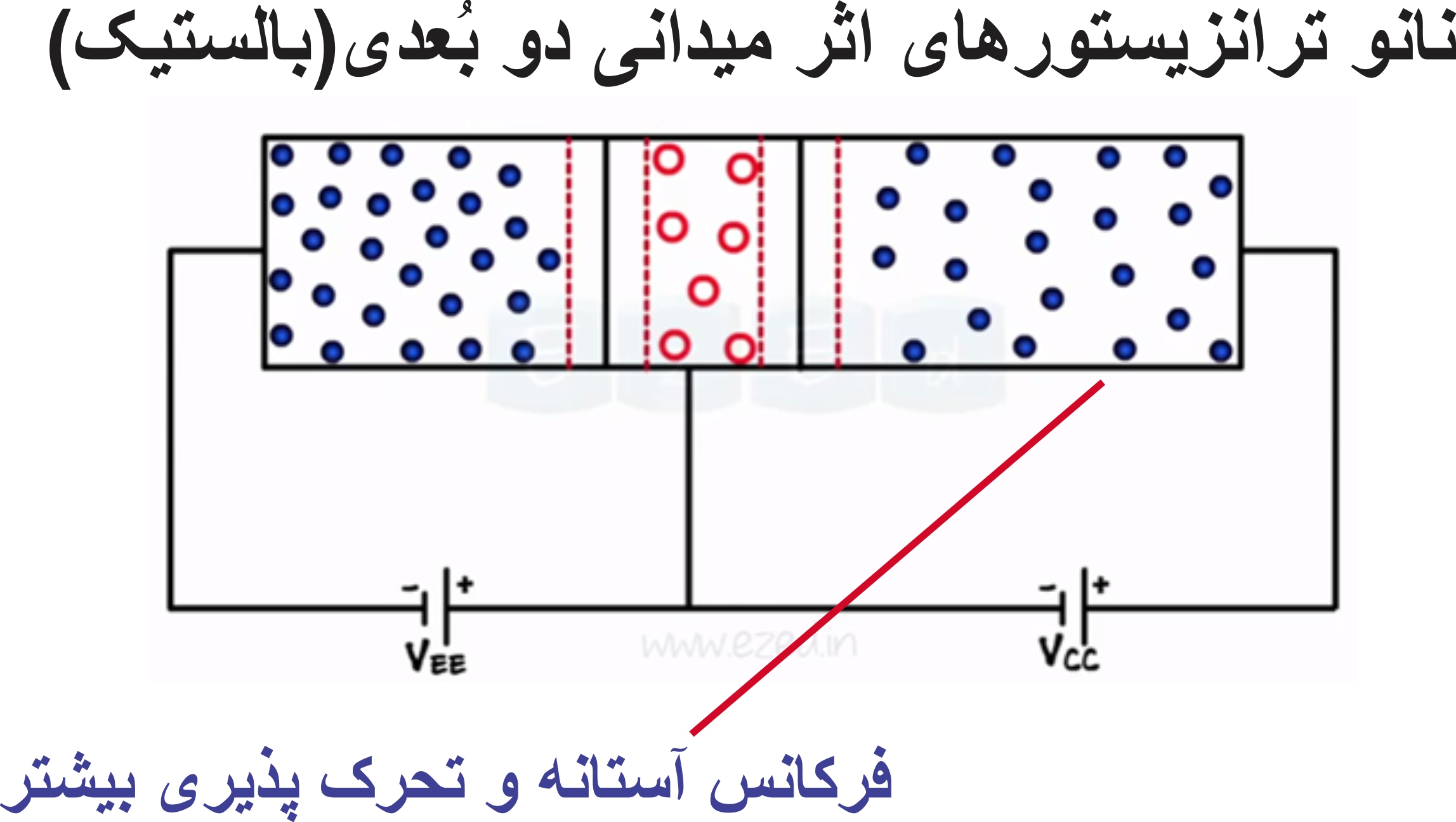Field Effect Nano Transistors (Nano Teransistor Mosfet)
Two-dimensional field effect nanotransistors (ballistic) having a threshold frequency and also greater mobility
Researcher and author: Dr. ( Afshin Rashid)

Note: Due to the very small thickness of graphene, it is possible to greatly reduce the gate length in (ballistic field effect nanotransistors) based on its field effect without encountering common problems in 3D nanotransistors. In 3D tube nanotransistors, very high mobility of electrons in graphene promises to have a threshold frequency as well as greater mobility in the circuit. The main advantage of two-dimensional ballistic bipolar transistor devicesdelay , which according to calculations reaches below 10fJ.
Apart from graphene, other materials with a two-dimensional structure have been discovered, among which we can refer to silicene and germanene . Ideas have also been given for making 3D tubular field effect transistors using phosphorene and graphene . But the common 2D ballistic field-effect nanotransistors that have been made so far are very slow and their switching time is of the order of tens of milliseconds, which limits their use to frequencies of a few kilohertz. Apart from the common field effect and bipolar ballistic nanotransistors , there are other ideas for using graphene or other 2D materials in making transistors . One of these ideas is the 3D tunnel field effect nanotransistor, which has optimal speed up to several GHz, low power consumption and more changes. The drain current is one of the advantages of this transistor. Also, other nano devices with gate voltage in the subthreshold region such as ballistic bipolar transistor, as well as optical devices based on graphene or other two-dimensional materials have been designed and manufactured. 3D nanotube transistors are tubes whose wall is graphene. These pipes can be single-walled or multi-walled according to the structure. On the other hand, depending on how the carbon atoms are twisted and arranged at the edge of the tube, they can be found in three forms (armchair, ziggurag and tube-like chiral) . These three forms of carbon nanotubes have very different properties. For example, the chair handle structure has the behavior of a metallic conductor, while the chiral nanotube structure has the behavior of a semiconductor , and this function can be achieved by matching the gap energy with Coordinates 3D carbon nanotubes.
It also gives unique electrical and mechanical properties to the 3D tubular nano transistor. The main problem in using nanotubes in the construction of 2D ballistic nanotransistors is mainly that they should be used lying on the surface so that they can be linked and a metal connection can be established to achieve transistor behavior. Meanwhile, vertical nanotubes grow more in the proliferation of 2D ballistic nanotransistors. If it is assumed that semiconductor and metal nanotubes can be grown and oriented on the surface with desired precision, they will provide the possibility of compression and increasing the speed of the integrated electronics as much as possible.
Conclusion :
Due to the very small thickness of graphene, it is possible to greatly reduce the gate length in (ballistic field effect nanotransistors) based on its field effect without encountering the problems common in 3D nanotransistors. In 3D tube nanotransistors, very high mobility of electrons in graphene promises to have a threshold frequency as well as greater mobility in the circuit. The main advantage of two-dimensional ballistic bipolar transistor devicesdelay , which according to calculations reaches below 10fJ.
Researcher and author: Dr. ( Afshin Rashid)
Specialized doctorate in nano-microelectronics



